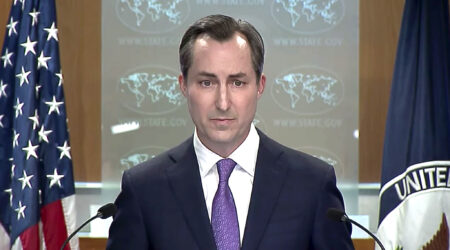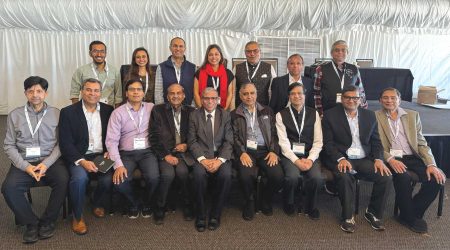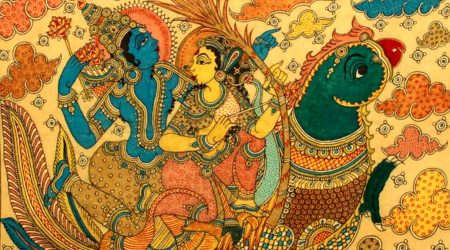By Pracheta Acharya
The global demand for critical minerals is at an unprecedented high, fuelled by the surge in clean energy initiatives, technological advancements, and the needs of essential sectors such as defence, telecommunications, information technology, and healthcare. However, the supply of these crucial minerals often falls short, posing a significant challenge to the sustainable development of key industries worldwide.
In this context, the Quadrilateral Security Dialogue (QUAD) countries – India, USA, Japan, and Australia – emerge as pivotal players with the potential to reshape the critical mineral supply chain in the Asia-Pacific region.
Two overarching issues define the challenges associated with the critical minerals supply side. Firstly, the geographical concentration of production and availability leaves the supply chain vulnerable to disruptions caused by political uncertainties and distorted trade policies. For instance, the Democratic Republic of Congo mines 69 percent of global cobalt, Indonesia 33 percent of nickel, and China dominates Rare Earth Elements.
Export restrictions imposed by China on gallium and germanium, along with a graphite ban in 2023, have further heightened concerns about the stability of the global market. Secondly, despite the soaring demand, critical minerals are not being optimally utilised, with many ending up as discarded tailings. This inefficiency calls for a comprehensive approach that addresses both the supply chain disruptions and the underutilization of these vital resources.
The QUAD countries have individually taken significant steps to tackle these challenges, demonstrating their commitment to building a resilient critical mineral supply chain. Notable efforts include the creation of open markets, international negotiations, and the sharing of technology and knowledge.
India, for example, has amended its mining laws to open up mines to private players, granting them permission to mine previously reserved minerals such as lithium, beryllium, niobium, titanium, tantalum, and zirconium.
The e-auction of 20 mineral blocks in 2023, and the recent announcement for the auction of 100 onshore along with 15 offshore critical mineral blocks, signifies a progressive approach in building a robust supply chain. Additionally, the Union Mines Ministry’s new rules prevent bid monopoly, allowing only one bid per applicant and barring affiliates from the same auction to promote competitiveness.
Recognising the small market size compared to other minerals such as coal, iron and coppers, QUAD countries have incentivised private players. India has granted a 25 percent incentive on exploration project costs, Japan has covered 50 percent for lithium projects, and Australia has planned to double the financing for critical minerals, making it to AUD$2 billion in 2023. A similar stance was taken by the US in 2022 where the government announced $675 million under the Bipartisan Infrastructure Law Programme for the expansion of the domestic critical mineral supply chain. In the same year, the government announced an additional funding of $156 million to develop a critical minerals refinery.
Furthermore, strategic international collaborations play a vital role in securing the supply of critical minerals. India’s engagement with Australia and its participation in the US-led Minerals Security Partnership (MSP) exemplify the global approach taken by QUAD countries. Joint ventures, like Khanji Bidesh India Ltd., demonstrate the potential for collaboration between public and private entities to secure mineral acquisition. Australia’s expansion into African countries, as seen in the lithium deal with Ghana, highlights the QUAD’s interest in unlocking global reserves. However, careful examination of historical exploitation loopholes is essential to ensure fair deals with the host countries.
Critical mineral refining is highly concentrated, with China dominating the cobalt, lithium, and manganese refining markets. QUAD’s technology-sharing platform, exemplified by the recent India-US collaboration, aims to develop refining processes in the Asia-Pacific, fostering competitiveness and diversification.
The individual Memorandum of Understandings signed by Monash University (Australia) with the Indian Institute of Technology Hyderabad and with the International Centre for Excellence in Mining Safety and Automation in Gujarat, India are noteworthy progress in building a vast global knowledge network in the critical mineral domain.
Australia, with its robust environmental standards and technology, must learn from countries like Sweden and South Africa in utilising mine waste and byproducts from discards to extract critical minerals. The potential to tap into five million tonnes of copper in Australian tailings waste could set a model for QUAD countries, provided cost feasibility is thoroughly explored.
In conclusion, the critical mineral supply chain in the Asia-Pacific is undergoing transformative changes through new deals, reforms, and negotiations facilitated by the strategic partnership of QUAD. The future landscape looks promising as QUAD countries actively push for global discussions on favourable trade, investment, and policy coordination, thereby strengthening the Asia-Pacific region’s position in the MSP.
The collective efforts of QUAD nations are not only reshaping the critical mineral supply chain but also laying the foundation for a sustainable and resilient future in the face of increasing global demands.
————————
Profile: Pracheta Acharya is a research associate at CUTS International, a global policy think-tank and advocacy group.
Disclaimer: The views expressed are not necessarily those of The South Asian Times












